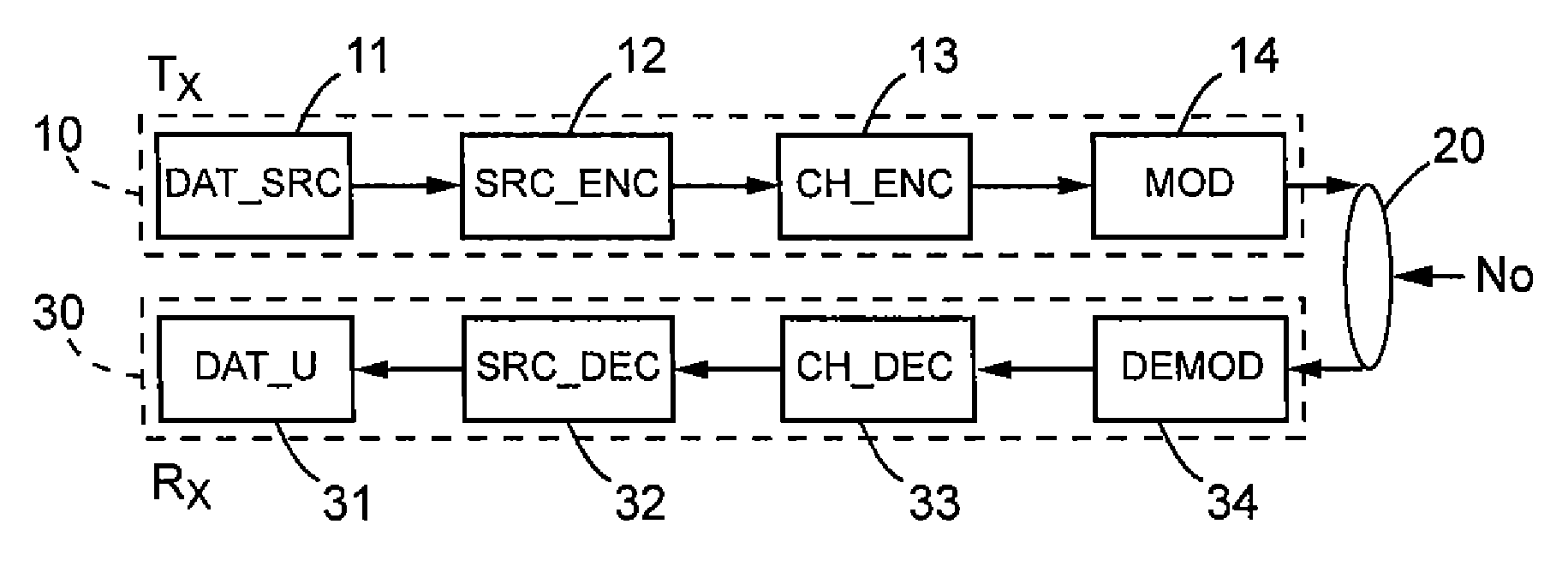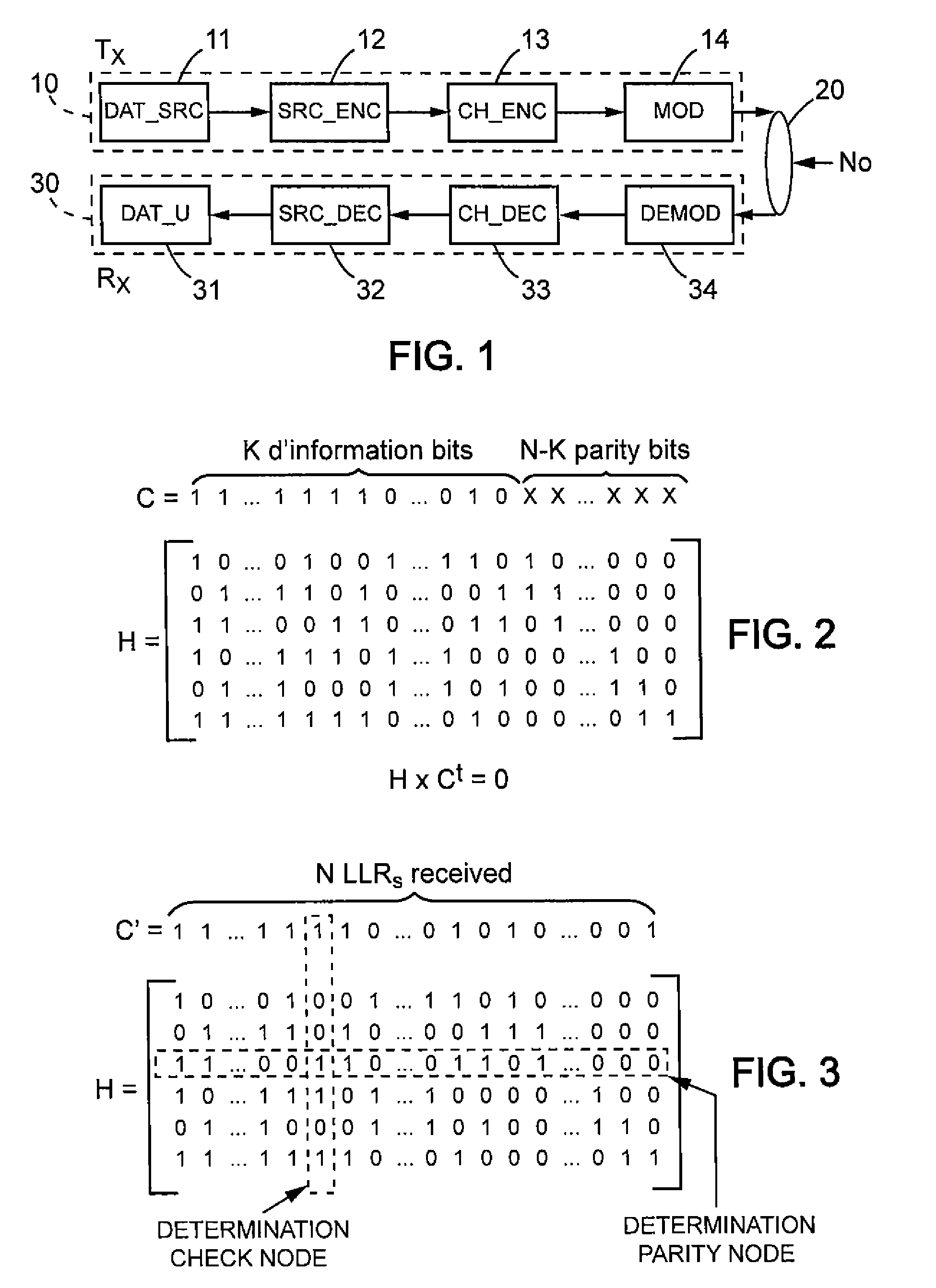Iterative decoding of a frame of data encoded using a block coding algorithm
a block coding and data technology, applied in the field of iterative decoding of data encoded using a block coding algorithm, can solve the problems of increasing the power consumption of the decoder, reducing the efficiency of the decoder, and reducing the cost of the decoder
- Summary
- Abstract
- Description
- Claims
- Application Information
AI Technical Summary
Benefits of technology
Problems solved by technology
Method used
Image
Examples
first embodiment
[0057] We will now describe the iterative decoder, still with reference to FIG. 5, and also with reference to the flow diagram in FIG. 6.
[0058] In this first embodiment, the processor bank 42 delivers, in each iteration of the iterative decoding, a block of N intermediate decision bits (in N / P successive steps, by respective groups of P such bits each), which assume the values “1” or “0” depending on the sign of the sum of the columns of the H matrix and the LLRs for the C′ word of the corresponding rank. This block of intermediate decision bits is stored temporarily in the output memory 45. More particularly, they are stored there for the duration of the next iteration in the iterative decoding algorithm, and are overwritten by the intermediate decision bits resulting from said next iteration. The purpose of storing the current block of intermediate decision bits is to use it as a block of reference bits in order to evaluate the stability of another block of intermediate decision b...
second embodiment
[0076] This is why we will now describe the iterative decoder, with reference to the diagram in FIG. 9 and the flow diagram in FIG. 10.
[0077] In this second embodiment, at each iteration of the iterative decoding algorithm, the processor bank 42 (FIG. 9) delivers a block IDBi of N intermediate decision bits (in N / P successive steps, by respective groups of P such bits each), which assume the value “1” or “0” depending on the sign of the sum of the columns of the H matrix and the LLRs for the C′ word of the corresponding rank. This block of intermediate decision bits is not stored in the output memory 45 as was the case in the first embodiment. Stated otherwise, the output memory is used in the traditional manner here, for storing the hard decision bits, and is updated after each iteration of the iterative decoding algorithm.
[0078] Even so, each generated block IDBi of N intermediate decision bits is delivered by the processor bank 42 as input to the comparison unit 46. This unit al...
PUM
 Login to View More
Login to View More Abstract
Description
Claims
Application Information
 Login to View More
Login to View More - R&D
- Intellectual Property
- Life Sciences
- Materials
- Tech Scout
- Unparalleled Data Quality
- Higher Quality Content
- 60% Fewer Hallucinations
Browse by: Latest US Patents, China's latest patents, Technical Efficacy Thesaurus, Application Domain, Technology Topic, Popular Technical Reports.
© 2025 PatSnap. All rights reserved.Legal|Privacy policy|Modern Slavery Act Transparency Statement|Sitemap|About US| Contact US: help@patsnap.com



